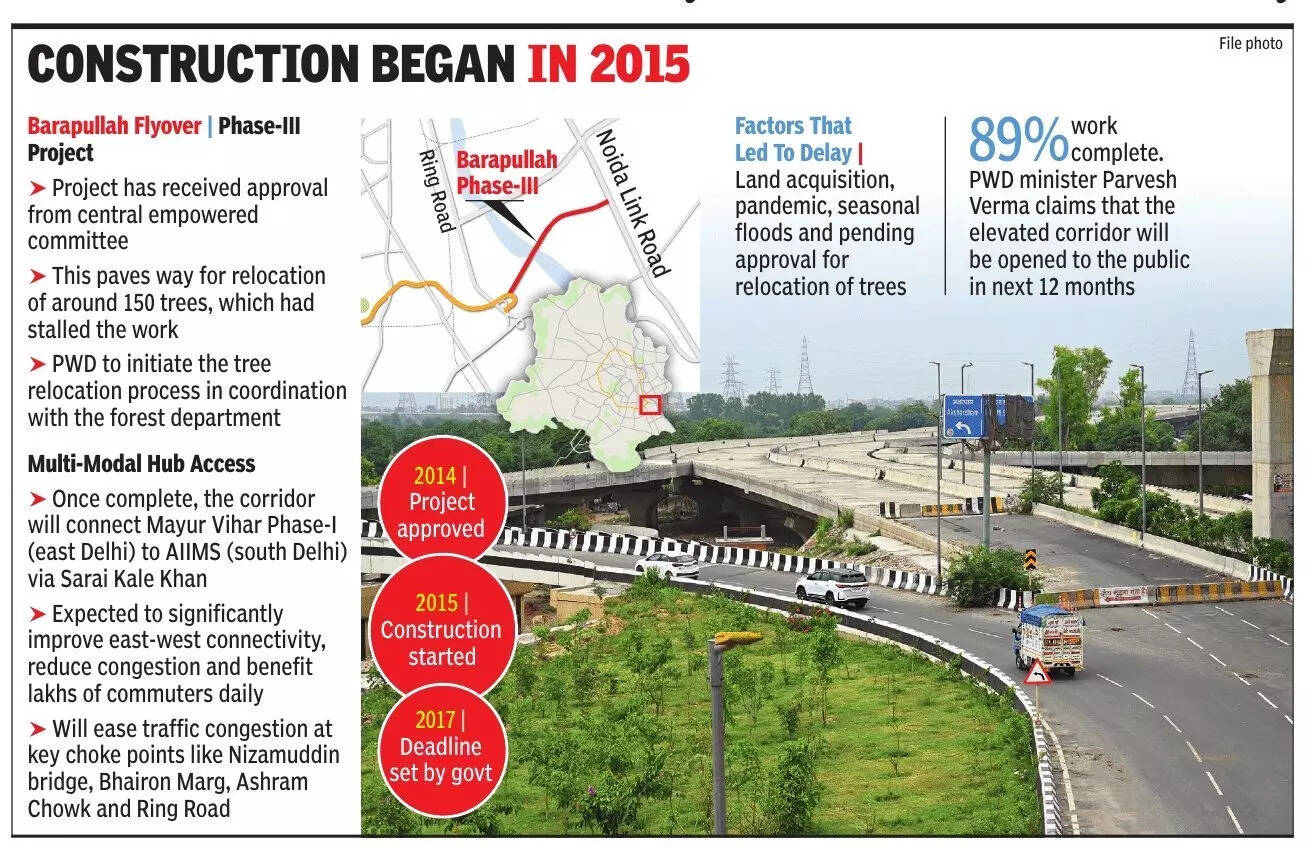NEW DELHI: Stalled for nearly a decade, Barapullah Phase-III project has finally received the green light after the central empowered committee granted the last pending tree-related clearances.With this, PWD will push to complete the elevated corridor within the next year, promising relief for commuters battling jams along NH-24, DND and Ring Road.Linking Sarai Kale Khan to Mayur Vihar Phase-I, the 3.5-km corridor—approved in 2014 and under construction since 2015—had been held up due to environmental and tree-clearance hurdles. The cost, initially pegged at Rs 964 crore, has now escalated to about Rs 1,330 crore, said a senior official.PWD officials said the corridor has been designed with multiple safeguards: a piersupported structure with an extradosed bridge across the Yamuna to minimise obstruction in the river’s active flow zone, three lanes each way, eight loops at the two ends, and dedicated cycle tracks and footpaths.

Officials estimate the green corridor will cut CO2 emissions by about 2 tonnes a day, comparable to the absorption capacity of 30,000 trees.Following the CEC’s directions, PWD and forest department carried out a detailed resurvey of trees along the alignment. Of the 155 trees in the central forest division, only 10 will be felled, 34 transplanted and 111 retained with light pruning. In the south forest division, 75 trees will be cut, 53 transplanted and 50 saved.Officials said that minister Parvesh Verma had been pushing the project. “With the green signal, we will swiftly complete the remaining works and open Barapullah Phase-III to the public, decongesting the NH-24, DND and Ring Road corridor while safeguarding the Yamuna floodplain. Within the next year, this corridor will be ready,” said Verma.The corridor will also boost access to the Sarai Kale Khan multi-modal hub, which connects NCRTC’s RRTS corridor, Indian Railways, ISBT, DMRC, and the Delhi–Mumbai Expressway. With approvals now in place, tree pruning and transplantation will begin, followed by rapid work on carriageways, loops and nonmotorised infrastructure.











